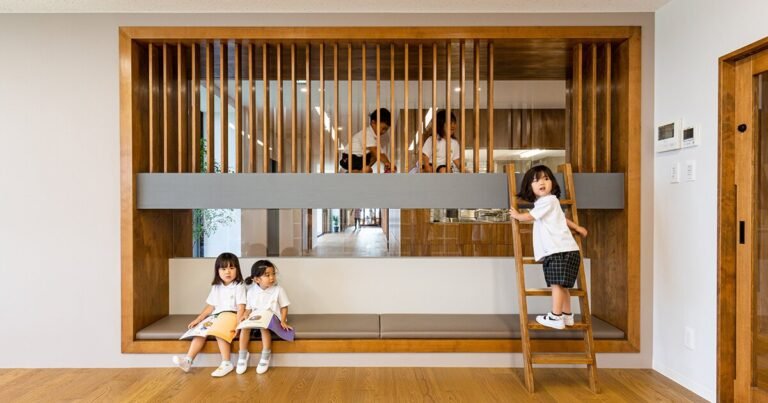Daily digest: Construction begins on Broadway Vision, Seoul proposes a spokeless ferris wheel, and Chinati’s new director
Happy Monday! To kick off the week we have—what else?—more news, including the start of construction for plazas and bike lanes in Manhattan, Seoul’s proposal to build the world’s largest spokeless ferris wheel, and the announcement of the Chinati Foundation’s new Executive Director.
Construction starts on a plan to promote pedestrian safety between Herald Square and Madison Square
In December, Mayor Eric Adams and Governor Kathy Hochul announced the New New York plan, a plan for a post-pandemic New York that would turn the city’s sleepy commercial areas into 24-hour neighborhoods. Progress toward these goals continued this weekend with construction kicking off on a phase of the “Broadway Vision,” a reimagining of the public plazas and spaces running along Broadway from Columbus Circle to Union Square. This phase concentrates on the areas between Herald Square and Madison Square.
The project aims to calm traffic in these neighborhoods, while also improving the public realm with two new plazas, planters, street furniture, and bike parking. The area is the location of an accident last year in which a taxi struck several pedestrians after jumping a curb.
“Through our Broadway Vision plan, DOT is creating a people-first Broadway, connecting from Union Square to Columbus Circle, and we look forward to redesigning the next section between Madison Square and Herald Square,” said DOT Commissioner Rodriguez in a press release. “This effort will not only further reduce reliance on vehicles and support safe, sustainable transportation, but will also improve our quality of life, bolster our economy, and protect our environment.

Two new plazas will be created along Broadway: between 25th Street and 26th Street and between 26th Street and 27th Street. To calm traffic in the area and promote pedestrian and bike safety, curbs along the roadway will be extended, and curb lanes will be reconfigured to ensure safe loading and unloading of vehicles.
Those moving by foot or bike will find wider crosswalks and shortened crossings. A two-way bike plan will be constructed and several new Citi Bike docks will be installed in the area.
Additionally, with the Flatiron NoMad Partnership, the city has permitted outdoor dining at restaurants in the plaza areas between 25th Street and 27th Street.
The project is expected to complete this summer.
Seoul proposes world’s largest spokeless ferris wheel
Seoul’s skyline is currently defined by the Lotte World Tower, a skyscraper with a tapering body and pointed tip designed by Kohn Pedersen Fox (KPF). A new proposal will add a spokeless ferris wheel to the skyline of the Korean city. While the addition will not rival the 1,821-foot Lotte World Tower in terms of height, it will certainly make a mark visually.
Announced by the Seoul Metropolitan Government, the project, which is slated to be named Seoul Ring, will be situated in Haneul Park along the Han River and will rise 591 feet, making it the largest spokeless ferris wheel in the world and the second largest ferris wheel globally.
Spokeless ferris wheels do away with the cables that traditionally run through the center of the popular amusement park rides, leaving only a circular frame from which the cars rotate.
Seoul Ring, similar to other observation wheels like the London Eye, will offer passengers a new perspective of the city’s skyline. It will have 36 passenger cars that can each accommodate up to 25 passengers.
Seoul chose Haneul Park as the site for the ride for a number of reasons, among these, haneul translates to sky in Korean, and the plot is close to South Korea’s northern border.
“Since the park is geographically close to North Korea, the SMG will concentrate its desire and wishes for a unified Korea and national unity on the Ring,” a press release stated.
Seoul Ring Zero will also be designed to generate solar power. Construction on the project will begin in 2025, and officials hope to complete it by 2027.
H/t to CNN
Caitlin Murray appointed Executive Director of The Chinati Foundation
The Chinati Foundation, a contemporary art museum in Marfa, Texas, founded by Donald Judd, conducted an international search for its new executive director. However, it didn’t have to look too far to finds its next leader. The museum has announced Caitlin Murray will take on the position of Executive Director. She has worked as the director of archives and programs at Judd Foundation since 2008.
“I am honored by the opportunity to deepen my engagement with Donald Judd’s legacy at the Chinati Foundation and to lead this extraordinary artist-founded and artist-centered organization,” Murray shared in a statement. “Working with Flavin and Rainer Judd and the board and staff of Judd Foundation during the last fifteen years has given me the opportunity to understand Judd’s range as an artist, and his commitment to art, architecture, design, politics, and the natural world. As executive director, I look forward to working with a group of friends and supporters who share my commitment to Chinati’s future.”
In her work at Judd Foundation, Murray edited the books Donald Judd Writings (2016) and Donald Judd Interviews (2019) and facilitated an NEH-funded project to organize and make publicly accessible Donald Judd’s papers. In this position she also worked with Flavin Judd, the Judd Foundation’s artistic director, to realize a number of exhibitions at 101 Spring Street, Judd’s former residence and studio in Soho. She holds a master of science of information studies and an MA in art history from the University of Texas at Austin.
Murray will assume her new role in May.



